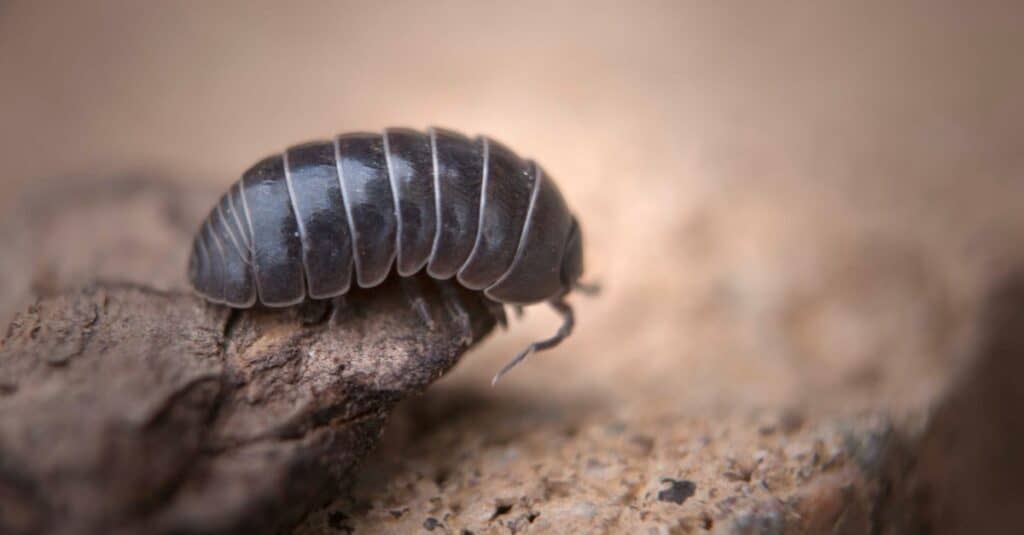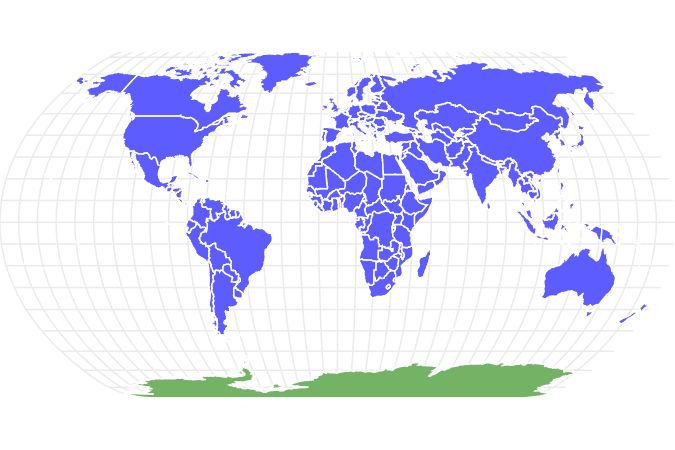Woodlouse
.jumbotron {
background-image: url(“https://a-z-animals.com/media/2018/09/woodlouse-header-400×300.jpg”);
}
}
@media only screen and (min-width: 641px) and (max-width: 920px) {
.jumbotron {
background-image: url(“https://a-z-animals.com/media/2018/09/woodlouse-header-470×370.jpg”);
}
}
@media only screen and (min-width: 921px) {
.jumbotron {
background-image: url(“https://a-z-animals.com/media/2018/09/woodlouse-header.jpg”);
}
}
Woodlouse
Armadillidium vulgare
This animal can roll up into a ball
Woodlouse Scientific Classification
- Kingdom
- Animalia
- Phylum
- Arthropoda
- Class
- Malacostraca
- Order
- Isopoda
- Family
- Armadillidiidae
- Genus
- Armadillidium
- Scientific Name
- Armadillidium vulgare
Read our Complete Guide to Classification of Animals.
Woodlouse Conservation Status
Woodlouse Facts
- Prey
- Rotting leaves, mildew, fungus
- Name Of Young
- Manca, juvenile
- Group Behavior
-
- Social
- Fun Fact
- This animal can roll up into a ball
- Biggest Threat
- Pesticides
- Most Distinctive Feature
- Armor-like shell
- Other Name(s)
- Pill bug, roly-poly
- Gestation Period
- 8-12 weeks
- Litter Size
- 100+
- Habitat
- Grassland, woods, gardens, farms
- Predators
- Humans, centipedes, spiders, frogs, shrews
- Diet
- Herbivore
- Type
- Crustacean
- Common Name
- Woodlouse
- Location
- Worldwide except Antarctica
- Group
- Social
This post may contain affiliate links to our partners like Chewy, Amazon, and others. Purchasing through these helps us further the A-Z Animals mission to educate about the world’s species..

Spiders that fly! Fish that walk! And 1000+ more incredible animals. Discover them all for FREE
.photo-gallery {
–margin: 0px auto 0px;
–padding: 0px 0px 0px 0px;
}
.gallery-link {
background-image: url(“https://a-z-animals.com/media/2018/09/woodlouse-isolated-1024×535.jpg”);
background-repeat: no-repeat;
background-size: cover;
background-position: center;
height: 500px;
justify-content: center;
text-align: center;
align-items: center;
display: flex;
border: 2px solid #000;
}
.gallery-link img {
height: 50%;
}
@media only screen and (max-width: 768px) {
.gallery-link {
height: 300px !important;
}
}
View all of the Woodlouse images!
“A female pill bug has a pouch on her belly where she carries as many as 200 fertilized eggs.”
When a woodlouse feels threatened or in danger, it rolls its body up into a ball so only its shell is visible. A rolled-up woodlouse looks kind of like a pill. That’s how it earned the name pill bug. One of the most surprising facts about a woodlouse is that it’s a terrestrial crustacean and not an insect. These tiny creatures feed on mildew, fungus, decaying leaves, and materials found in a compost pile. By eating this decaying material, woodlice help to release nutrients into the soil. During their lifespan of two to three years, they are of great importance to the ecosystem.
4 Incredible Woodlouse Facts!
- A woodlouse has 14 legs!
- Its exoskeleton, or outer shell, has the appearance of armor.
- Most of the time, they are found in a damp, dark environment.
- The life cycle of this crustacean includes these stages: eggs, baby (manca), juvenile, and adult. Their lifespan is two to three years.
Species Types and Scientific Name
Armadillidium vulgare is the scientific name of the woodlouse. The Latin word Armadillidium translates to little armadillo. This refers to the armor-like shell of this crustacean. They belong to the Order Isopoda and the Family Armadillidiidae. There are 3,500 plus species of woodlouse.
Some types of woodlouse are:
- Armadillidium pictum
- Armadillidium granulatum
- Armadillidium nasatum
- Armadillidium lagrecai
- Armadillidium depressum
Appearance
A woodlouse has a shell that is dark gray or black. One of its most well-known features is its armor-like exoskeleton made up of seven plates. They have two legs on each of these seven plates making a total of 14 legs on this little creature. Its body measures from 0.7mm to 18mm in length and is approximately 5mm wide. This crustacean has two short antennae on its head.
A sea slater is a crustacean very similar to a woodlouse. A sea slater has the same flat, dark body with an exoskeleton divided into segments. However, a sea slater at three centimeters in length is bigger in size than a woodlouse.
The main defensive behavior of a woodlouse is to roll into a ball at the first sign of a threat. This is a way to cover its vital organs to protect them from a predator. It can also make an odor-filled chemical in its body that is repellent to its predators. In addition, the gray or black color of this crustacean helps it to blend into its moist, dark habitat.
The lifespan of this creature is two to three years, so its defensive behavior is certainly effective!
Woodlice live in groups. If you lift a rock in a garden or look into a compost pile, you’re likely to see dozens of woodlice. Each individual of this type is called a woodlouse. Two or more of them are known as woodlice. A group of these crustaceans is called a colony.

iStock.com/Werhane
Habitat
One of the most amazing facts to remember about woodlice is they live in all places in the world except Antarctica. They live in temperate to tropical climates. Gardens are a common habitat of this crustacean. Woodlice and their eggs are also found under piles of leaves, rocks, downed trees, and in the soil. Moisture and darkness are the two main features of its habitat.
Sometimes woodlice find their way into homes especially if there is a welcoming habitat near the structure. Picture a group of woodlice living in a pile of rotting wood near the wall of a home. It wouldn’t be a surprise if a few woodlice made their way inside the house from time to time. They would only stay in a home if they found mold.
Diet
Generally, the diet of a woodlouse is herbivorous. But scientists categorize it as a detritivore because of the specific material it eats. The word detritus is in the word detritivore. Detritus is decaying or rotting material in the environment.
What does a woodlouse eat?
The diet of a woodlouse includes decaying leaves, fungus, mold, and even the droppings of other animals. So, now you see why they are called detritivores!
What eats a woodlouse?
The predators of a woodlouse include frogs, shrews, centipedes, and spiders. All of these predators share the same habitat as the woodlouse. Baby woodlice are even more vulnerable to these predators because their shell is not as sturdy.
Prevention
If you see one or two woodlice in your home, know that they are not harmful in any way. But, if you notice several of them including baby woodlice, it may mean they are feeding on mold or mildew inside your home. You may have some rotting wood due to water damage in a ceiling or floor.
Fixing the damage is going to remove any reason for woodlice to be in your home. They would rather be in your garden!
View all 74 animals that start with W
Woodlouse FAQs (Frequently Asked Questions)
Are Woodlouses herbivores, carnivores, or omnivores?
Woodlice are herbivores, meaning they eat plants.
Where do Woodlouses live?
These creatures live in a moist, dark habitat such as in a compost pile, a rotting stump, under wet leaves, or in the soil in a garden.
What do Woodlouses eat?
Woodlice have a diet of rotting leaves and fruit, fungus, mildew, and mold. It eats the leftovers, or detritus, in the environment.
How many species of Woodlouse are there?
There are 3,500+ species of Woodlouse.
What is a woodlouse?
A woodlouse is a terrestrial crustacean. This is a crustacean that lives on land. Alternatively, a marine crustacean, like a lobster, lives in the water. A woodlouse is an average of 10 mm long in size and about 5mm wide. A baby woodlouse is less than the size of a grain of rice.
During the life cycle of a woodlouse, it sheds its exoskeleton. This is called molting. Molting is a behavior that plays a part in the life cycle of many animals including spiders, birds, and lizards, among others. This process renews the shell of a woodlouse and deepens its color as it grows.
These tiny crustaceans are very important to the environment. As they eat decomposing material on the ground, they are adding nutrients to the soil. This raises the quality of the soil.
How do I get rid of woodlice?
Woodlice play an important part in the ecosystem by nourishing the soil. But, if you want to get rid of these creatures, one option is to take away their habitat. If you have rotting wood in your house, replacing it will get rid of the woodlice.
If you don’t want woodlice in your garden, get rid of large rocks, stumps, or piles of wood nearby that may serve as shelter for colonies of these crustaceans.
How many legs does a woodlouse have?
A woodlouse has 14 legs. Each of the seven segments of its armored body features two legs.
What is a group of woodlice called?
A group of woodlice is called a colony.
Are woodlice harmful to humans?
No. Woodlice are not harmful to humans. They don’t carry diseases or illnesses that could be passed to a person.
Are woodlice and pill bugs the same thing?
Yes. A woodlouse and a pill bug are the same creatures. Woodlouse is the official name of this crustacean. Pill bug is one of its many nicknames. It’s called a pill bug because of its ability to curl up into a ball that looks like a pill.
What causes woodlice in a house?
Normally, woodlice move into a house because there is damp or rotting wood somewhere in the structure. They feed on mold and mildew.
Do woodlice bite?
No, these creatures don’t bite. If you touched a woodlouse, it would roll into a ball and remain that way until it felt safe to start moving again.
Sources
- University of Florida IFAS, Available here: https://entnemdept.ufl.edu/creatures/MISC/Armadillidium_vulgare.htm
- St Louis Zoo, Available here: https://www.stlzoo.org/animals/abouttheanimals/invertebrates/woodlouse
- Wikipedia, Available here: https://en.wikipedia.org/wiki/Armadillidium
- The Wildlife Trusts, Available here: https://www.wildlifetrusts.org/wildlife-explorer/marine/crustaceans/sea-slater
- Earth Life, Available here: https://www.earthlife.net/insects/isopoda.html
















